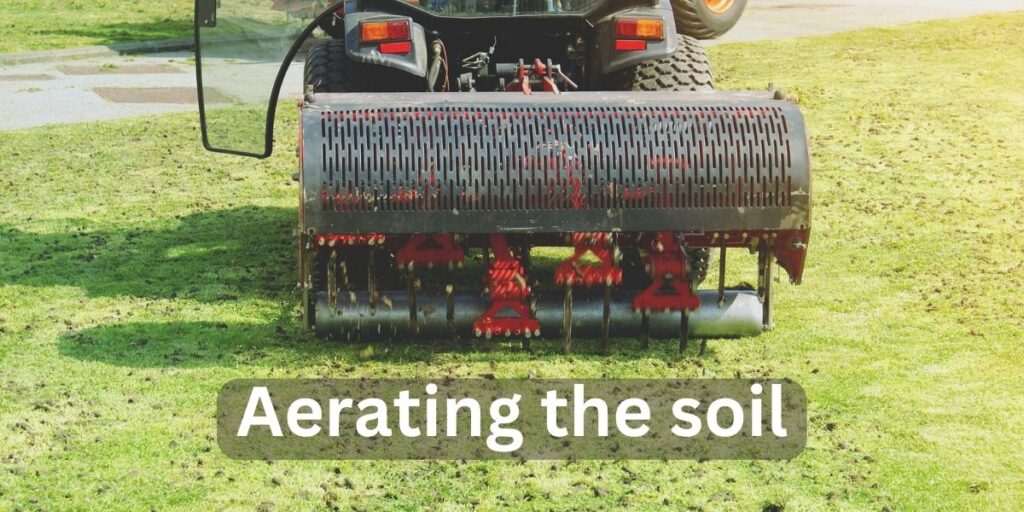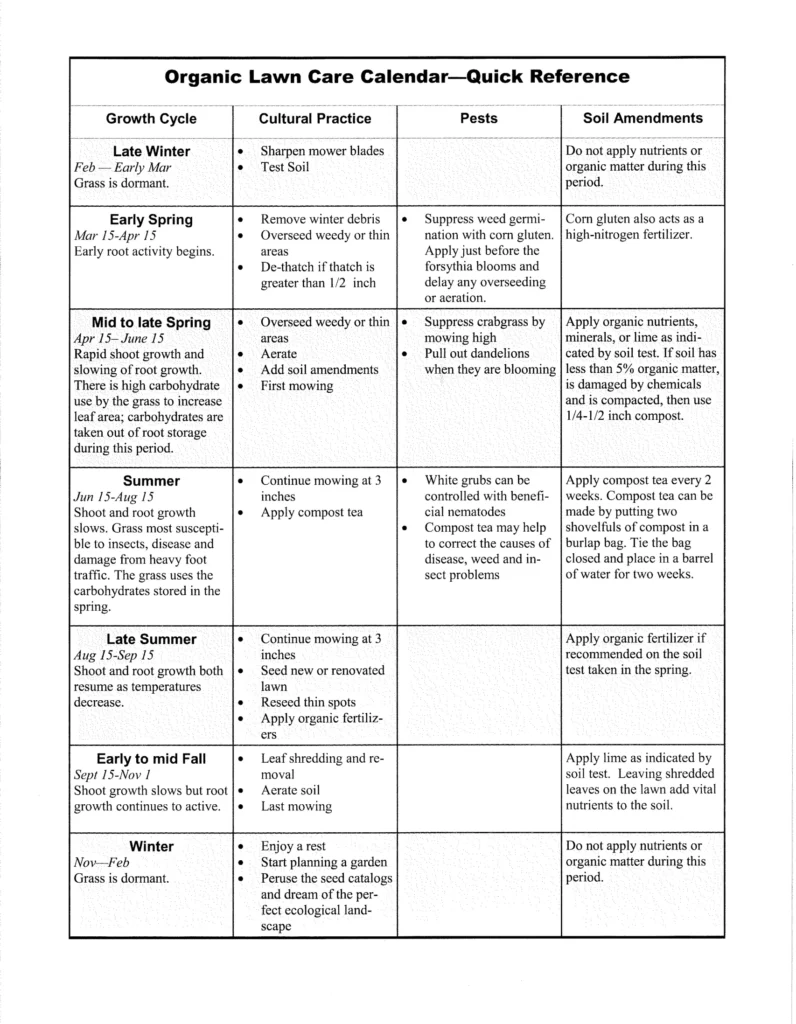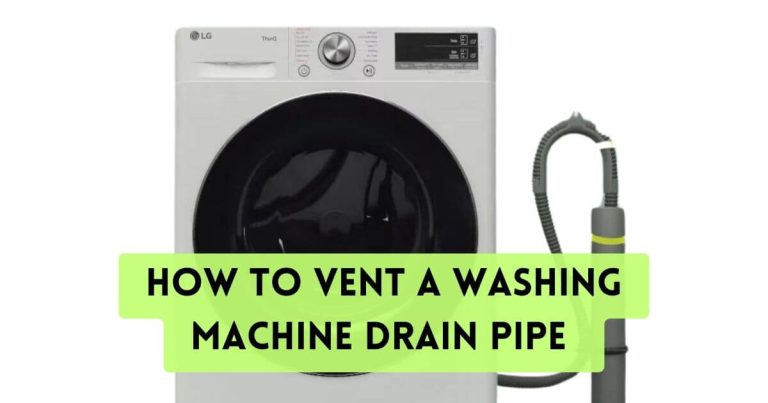How Do You Maintain Your Lawn? [5 Easy Steps]
Homeowners know how important it is to maintain their lawns. A well-kept lawn not only adds curb appeal to your property but also provides a relaxing space for outdoor activities. You may be asking yourself – how do I keep my grass healthy?
How do you maintain your lawn? You can maintain your lawn by mowing it regularly. It should be cut at least once a week during summer and once every two weeks during spring, autumn, and warm winters. This encourages steady growth and deters weed growth. Use a garden fork to spike the soil and remove compaction before seeding bare patches. Adjust your cutting height according to the time of year, and use a sharp mower blade for clean cuts.
We have prepared steps for lawn care, low-maintenance ideas, and even eco-friendly lawn care options so you can keep your lawn looking its best. Read on so that you can get started on your lawn maintenance journey.
How to Maintain Your Lawn
A beautiful lawn is an excellent addition to any home but requires regular maintenance. The thing is, you can do it in one day. It’s a process that you will have to commit to. When done right, you can have lush-looking, green lawn. It’s also the only way to pre
Proper yard maintenance can be broken down into five key steps: mowing, watering, fertilizing, aerating, and dealing with weeds and pests. Let’s discuss them below:
Step 1: Mowing

Mowing is an essential part of lawn maintenance. It helps keep your grass healthy by removing the top growth and encouraging new growth. When mowing your lawn, set your mower blade at the right height. Cutting too short can damage the grass and leave it vulnerable to disease and pests. A good rule is never to remove more than one-third of the grass blade at a time.
In addition to proper mowing height, it’s also important to mow regularly. For most lawns, once a week is sufficient during the growing season. However, you may need to cut less frequently during drought or extreme heat. These lawn mowing guidelines can help ensure your front yard or backyard stays healthy and green.
Step 2: Watering
Watering is another critical aspect of yard maintenance. Most lawns require about an inch of water per week during the growing season. However, this can vary depending on soil type and weather conditions.
To determine if your lawn needs watering, check the soil moisture level by sticking a screwdriver or other long object into the ground. You can also use a soil meter with several measurements, including soil moisture.
When watering your lawn, it’s essential to do so deeply and infrequently rather than shallowly and frequently. This encourages deep root growth and helps make your grass more drought-resistant. Additionally, try to water early in the morning when evaporation rates are low.
Step 3: Fertilizing
Fertilizing provides essential nutrients that help keep your lawn healthy and green. The best time to fertilize depends on where you live and what type of grass you have in your front yard or backyard. Generally, it’s best to fertilize in early spring before the growing season begins.
When choosing a fertilizer for your lawn maintenance routine, look for one with a balanced ratio of nitrogen (N), phosphorus (P), and potassium (K). This will provide all three essential nutrients without overloading any one nutrient.
Step 4: Aerating

Aerating involves creating small holes in the soil to allow air, water, and nutrients to penetrate deeper into the root zone. This helps promote healthy root growth and makes the grass more resilient against drought conditions.
The best time to aerate depends on where you live and what type of grass you have in your front yard or backyard. For most lawns, late summer/early fall is ideal for aerating. You can rent an aerator from a local garden center or hire a professional landscaper.
Step 5: Dealing with Weeds and Pests
Weeds are an inevitable part of any yard maintenance routine, but there are ways they can be controlled. One way is through regular mowing, which removes weed seed heads before they can spread. Another way is by applying pre-emergent herbicides, which prevent weed seeds from germinating.
Pests like grubs, chinch bugs, armyworms, etc., can cause significant damage if left unchecked. Contact professional pest control services immediately if you notice signs of pest activity, such as brown patches, thinning turf, or insect activity on leaves.
What are some low-maintenance landscaping ideas for your lawn?
Regular upkeep can be expensive, but many low-maintenance landscaping ideas can help you save money. They include:
Choosing Low-Maintenance Grass Types and Plants
One of the easiest ways to reduce maintenance in your yard is by choosing grass types and plants that require less attention. Consider replacing traditional grass with artificial turf or a low-growing, drought-resistant variety.
Native plants are also a great option as they are adapted to your local climate and require less water and fertilizer. Some examples of low-maintenance plants include succulents, lavender, and ornamental grasses.
Installing Hardscaping Features

Hardscaping features such as pavers, rocks, and gravel can add visual interest to your yard while reducing the need for mowing and watering. Consider creating a pathway or patio using pavers or adding a rock garden filled with low-maintenance succulents. Gravel can be used as a ground cover around plants to reduce weed growth and retain moisture.
Using Mulch
Mulch is another great way to reduce weed growth and retain moisture in your yard. It also adds visual interest and can create defined borders around plant beds. Choose a natural mulch such as wood chips or bark for the best results.
What are the Best Eco-Friendly Lawn Care Options?
If you’re looking for natural lawn care options that are good for both your family and the environment, there are several things you can do. Here are some tips to help you maintain a quality lawn without relying on harsh chemicals:
Organic fertilizers and pest control methods
Organic fertilizers and pest control methods are the best ways to keep your lawn healthy and green. These products are made from natural ingredients, so they won’t harm your family or pets. Look for products that contain ingredients like bone meal, blood meal, and composted manure.
Choosing native plants that require less water
Another way to reduce your environmental impact is to choose native plants that require less water. These plants are adapted to your local climate, so they’ll be able to thrive without requiring as much water or maintenance. Plus, they’ll attract beneficial insects like bees and butterflies.
Using rain barrels to collect rainwater for watering
Consider using rain barrels to collect rainwater for watering your lawn and garden. This is a great way to conserve water and reduce your environmental impact. You can find rain barrels at most home improvement stores or online.
What is a good lawn maintenance schedule?
Taking care of your lawn requires a consistent and well-planned maintenance schedule. A good lawn maintenance schedule should include the frequency of mowing, timing of fertilization and weed control, and seasonal tasks such as aeration and overseeding. Here are some tips to help you create a comprehensive lawn maintenance schedule:
Frequency of Mowing
Mowing is an essential part of maintaining a healthy lawn. The mowing frequency depends on your grass type, the time of year, and how quickly your grass grows.
Generally, it would be best if you aimed to mow your lawn once a week during the growing season. However, if your grass is growing quickly or if it’s been frequently raining, you may need to mow more often.
Timing of Fertilization and Weed Control
Fertilization and weed control are critical components of any lawn maintenance schedule. The timing of these tasks will depend on your grass type and climate.
Generally, it’s best to fertilize your lawn in the spring and fall when temperatures are mild. You can also apply weed control products at this time to prevent weeds from taking over your lawn.
Seasonal Tasks

In addition to regular mowing, fertilization, and weed control, there are several seasonal tasks that you should include in your lawn maintenance schedule.
Spring (March-May)
Spring is when your lawn returns to life after the winter dormancy period. Here are some essential tasks to perform during spring:
- Clean up your yard by removing any debris or dead leaves.
- Apply pre-emergent herbicides to prevent weeds from germinating.
- Fertilize your lawn with a slow-release nitrogen, phosphorus, and potassium fertilizer.
- Aerate your lawn to improve soil drainage and reduce soil compaction.
- Water your lawn deeply once or twice a week.
Summer (June – August)
Summer is when your lawn faces its toughest challenges, such as heat stress and drought. Here are some essential tasks to perform during summer:
- Mow your lawn regularly but avoid cutting it too short.
- Water your lawn deeply once or twice a week in the early morning or late evening.
- Apply post-emergent herbicides to control any weeds that have already germinated.
- Fertilize your lawn with a slow-release nitrogen, phosphorus, and potassium fertilizer.
- Watch out for pests such as grubs and chinch bugs.
Fall (September – November)
Fall is the time when your lawn prepares for winter dormancy. Here are some essential tasks to perform during the fall:
- Rake up fallen leaves regularly to prevent them from smothering your grass.
- Aerate your lawn again if necessary.
- Fertilize your lawn with a slow-release nitrogen, phosphorus, and potassium fertilizer.
- Overseed bare spots in your lawn with grass seed appropriate for your region.
Winter (December – February)
Winter is the time when most lawns go dormant. However, there are still some essential tasks you can perform during winter:
- Keep an eye on snow mold, which can damage grass blades under heavy snow cover.
- Avoid walking on frozen grass blades as they can break easily
- Remove any debris or dead leaves from the yard
Following this comprehensive schedule throughout the year ensures you have a healthy and beautiful green carpet in front of your house.
How to Find Affordable Lawn Care Services?
Finding affordable lawn care services is possible with some research and negotiation. Here are some tips to help you find your area’s best and most affordable lawn care services.
Researching Local Companies
The first step in finding affordable lawn care services is researching local companies. Look for companies that offer lawn maintenance services or yard maintenance near you. Check out their websites and read reviews from previous customers to get an idea of their quality of work.
Some popular websites to find local lawn care providers include Yelp, Angie’s List, GreenPal, LawnStarter, Lawn Love, Thumbtack, and WikiLawn. These websites provide ratings and reviews of local companies that offer affordable lawn care services.
Comparing Prices and Services Offered
Once you have a list of potential companies, compare their prices and services. Some companies may offer essential services such as mowing and trimming, while others may offer fertilization, pest control, and landscaping services.
Make sure to compare prices for the same level of service across different providers. Some providers may charge more for additional services or larger lawns. Look for discounts or promotions that may be available on their website or through coupons.
Negotiating with Providers
Don’t hesitate to negotiate with providers to get the best deal possible. Ask if they offer any discounts for regular customers or if they have any specials going on at the moment.
You can also ask if they will match a competitor’s price if you find a better deal elsewhere. Be polite but firm when negotiating with providers to get the best possible price without sacrificing quality.
Frequently Asked Questions (FAQs)
If you’re new to lawn care, you may have questions about how to care for your grass best. Here are some frequently asked questions and their answers:
What is the full meaning of lawn?
A lawn is an area of land planted with grasses maintained at a short height. Lawns are typically used for aesthetic or recreational purposes.
What makes grass grow faster?
Grass needs three things to grow: sunlight, water, and nutrients. To make your grass grow faster, ensure it’s getting enough of all three. You can also fertilize your lawn to give it an extra boost.
Should I water my grass daily?
No, you should not water your grass daily. Overwatering can harm your lawn by promoting shallow root growth and making it more susceptible to disease. Instead, water deeply but infrequently, giving your lawn about 1 inch per week.
What is the best time of day to water your lawn?
The best time to water your lawn is early morning, between 4 am and 10 am. This allows the grass to absorb moisture before the sun gets too hot and evaporates it. Watering in the evening can lead to fungal growth on the grass.
Conclusion
Lawn care is essential to keeping your lawn looking healthy and green. Investing in regular maintenance tasks such as aeration, overseeding, and fertilization can help improve soil health and keep your grass looking lush.
With some research, you can find affordable lawn care services in your area that can help fill in bare spots on your lawn. Don’t wait; take action today to ensure your lawn looks its best.







Thank you for the reminder that watering is an essential part of yard management since, during the growth season, most lawns need roughly an inch of water every week. So I suppose I was correct. I mean, I don’t have the specific knowledge and abilities needed to maintain a healthy and attractive lawn, so I want to employ a lawn care specialist. I think that by working with a contractor, I can make sure that my property gets the upkeep, weeding, fertilizing, and mowing that it requires. https://www.dirtandturf.com/brick-township-lawn-care
You’re welcome. Don’t forget to share the post.